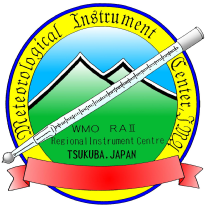Established in 1944, the Meteorological Instrument Center (MIC) is a unique institution responsible for developing the meteorological instrumentation of the Japan Meteorological Agency (JMA). MIC produced instruments for domestic meteorological observation until 1970, and relocated to Tsukuba in Ibaraki Prefecture in 1975.
At the 11th session of RA II in 1996, Japan and China were designated as RICs for RA II, which consists of 35 countries and areas. In response, JMA established RIC Tsukuba at MIC in 1998.
RIC Tsukuba has complied with ISO/IEC 17025 (an international standard for full-capacity RIC calibration laboratories; see "Acquisition of ISO/IEC 17025") in selected areas since 2012.
Today the Center maintains standard meteorological instruments and testing equipment for barometers, thermometers, hygrometers and anemometers and traveling standards (except for anemometers) traceable to Japanese national standards. Using these instruments and equipment, it calibrates standard instruments of Member countries.
The Center also holds training workshops for instrument specialists from RA II countries and conducts surveys on the current status of instruments and their calibration in Member countries, thereby contributing to improved quality and reliability in RA II meteorological observation data. For details of achievements, see Activities.



